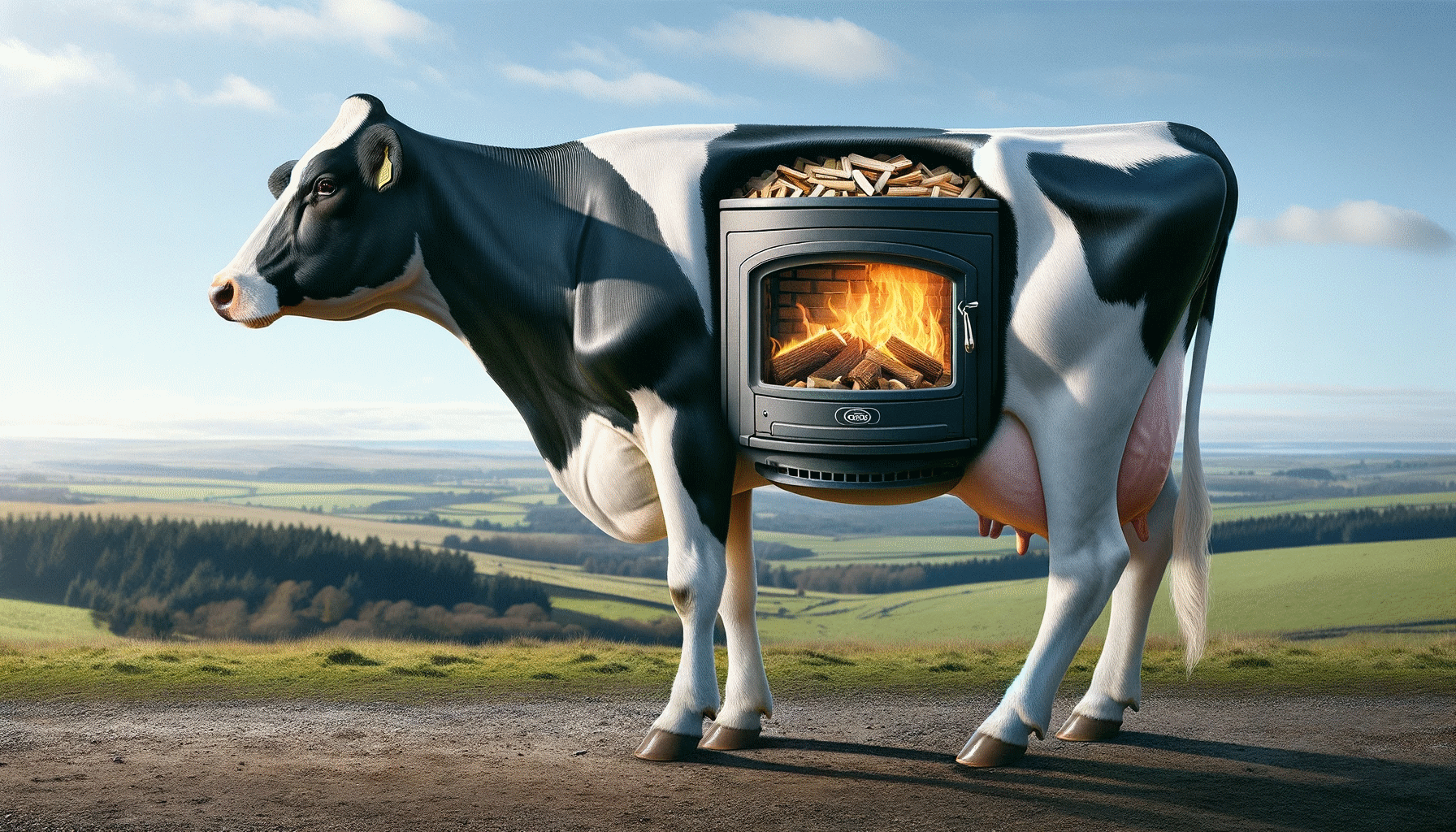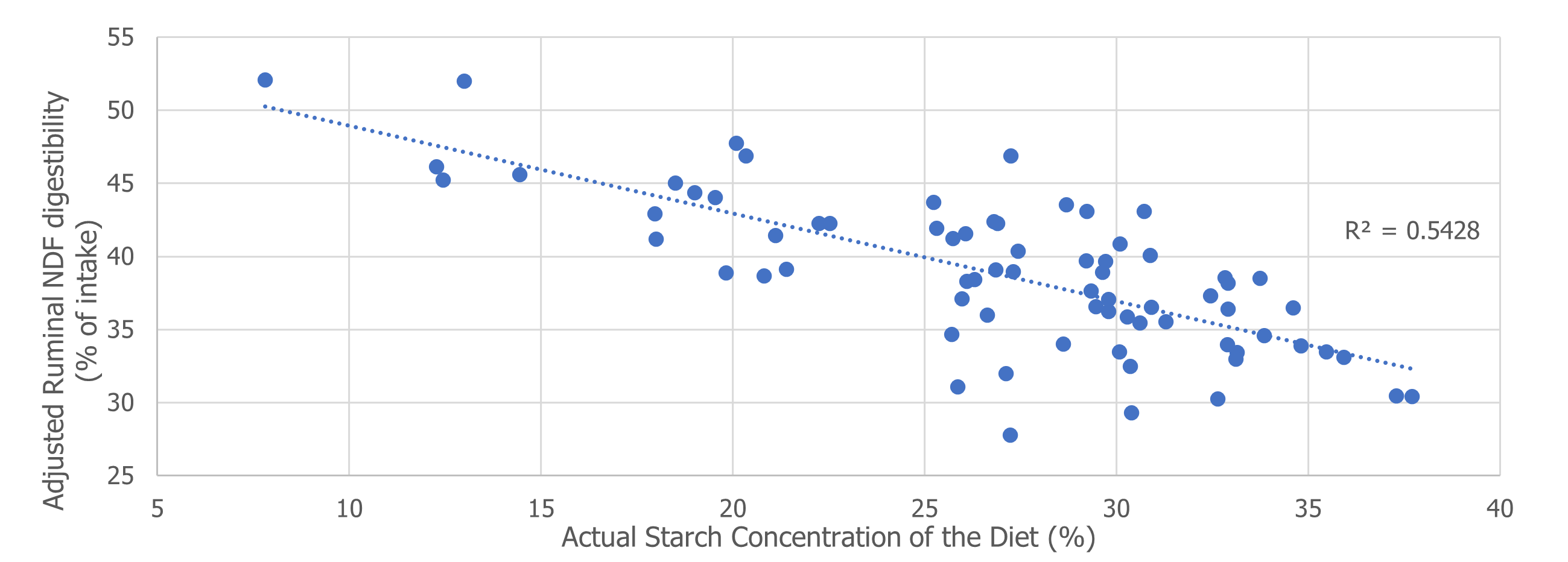
Reports of cows not milking as well as expected are widespread at present. Silages appear to be the culprit. They are just not digesting it as they should and it’s costing milk in the tank. We don’t want to take that, so let’s have a look at how we can fire up the rumen and pull out some more yield.
But first, it’s worth working out the value of milk you feel is missing. Any solutions will need to leave a margin to make them worth while.
Relight my fire
If we think of the rumen like a log burner, and the silage as logs, some of these silages are like trying to burn oak! With average NDF’s hovering around the mid 40’s and lignin around the 40g/kgDM mark, there can be some pretty bound up fibre. If we are going to burn this stuff down to release the energy, we are going to need to burn the log burner hotter.
To get the rumen firing we need to concentrate on the needs of the rumen bacteria. It is cellulolytic and fibrolytic bacteria that produce enzymes (cellulases and hemicellulases) that break down the fibre. What can we do to help them do their job?
The log burner analogy is ideal for thinking about this. To re-kindle a log burner, it needs highly combustable kindling. So a question might be, does the rumen need more fermentable energy to accelerate the effectiveness of fibre digesting bacteria?
Regulated amounts of molasses can work well for this. As long as there is sufficient rapidly fermentable protein, then we can multiply up an army of fibre digestors. It could be that a molasses + urea type product is a good fit for the ration if fermentable protein is also required.
Starch based rapidly fermentable carbs from cereal feeds, maize or wholecrop forages are broken down by the starch digesting bacteria. These use enzymes (Amylase) to break down starches into a series of sugars and then other enzymes to make glucose. The glucose can then be fermented into volatile fatty acids.
But there is a slight warning: Feeding too much starch can result in lower NDF digestibility. Meta analysis of numerous studies1 provides a headline correlation that for each 1% increase in starch, the ruminally digested NDF drops by 0.61%.
But to more fully understand, if we look at the chart below, we can see that the major drop occurs for diets >25% starch. Even then, some diets can maintain a higher level of ruminal NDF digestibility up to around 30% starch in the diet. This is really useful to know as we might want to feed higher levels of starch.

Everything changes
A failure to balance the diet correctly can mean major changes to the levels of the volatile fatty acids and the effect on rumen pH. This is where we get the problems in NDF digestibility shown above.
The chart below nicely illustrates the changing yields of Acetate, Butyrate and Propionate in the rumen over a range of rumen pH’s.

Source: https://celticseaminerals.com/rumen-acidosis/
Acetate and butyrate are the building blocks of milk fat and propionate yields glucose which helps with milk proteins.
If we are trying to manage milk solids and methane production then this information is useful, as managing rumen pH is critical to success.
A high rumen pH is great for acetate and butyrate, but propionate yield is lowered. As fibre is digested to yield acetate and butyrate, hydrogen and carbon dioxide are produced as a byproduct. This hydrogen can end up captured by methanogens to produce methane (CO2+4H2 = Methane CH4 + Water 2H2O). But, if propionate is being produced at the same time, then this can grab the hydrogen and stop some of it being used for methane (Glucose C6H12O6 + 2H2 = Propionate CH3CH2COO− + Water 2H2O). This is probably not a bad idea!
So, bringing the rumen pH down closer 5.8 – 6.0 could find a sweeter spot where we get better propionate yield, less methane but still good acetate and butyrate.
The danger is that we cannot hold a constant burn. Fluctuations in digestion of the different components could mean that rumen pH swings up and down seriously affecting our bacterial populations.
Below 5.8 pH Sub Acute Ruminal Acidosis (SARA) is a real and present danger to cow health, so holding a constant burn just above this is key.
Feeding a yeast is great at helping to keep some control in the rumen. Yeast can help unpack those fibre bundles releasing digestible fibre over time. It also scavenges oxygen, promotes lactic acid utilising bacteria, mops up excess sulphur and reduced rumen ammonia levels.
Yeast doesn’t work immediately. It could take a week or two to show an effect, so have a little patience and stick with it.
Never forget
If the rumen is burning too hot (dropping the pH) it can reach a flash point and start producing lactic acid. Lactic acid is a strong acid that can soon drop pH well below the operating range of the fibre digesting bacteria and we will not get digestibility of the NDF.
The use of rumen buffers are pretty handy to regulate rumen pH. The cheapest method to increase rumen buffering is through the bicarb in the saliva, but with plenty of tough fibre in the diet already, then the use of an effective buffer is a good option.
Muscle function is critical to ensure that the rumen turnover is aggressive and mechanically helps mix and breakdown feed. Don’t forget, Calcium also needs a focus.
Back for good
When regulating the burn in the rumen, the most efficiency will be gained by maintaining a constant burn. There are costs to letting the fire die down and costs for over fuelling it.
There is also a cost to dropping milk along the individual cow’s lactation curve. So often we see cows drop in milk and not return to their previous trjectory. If you want the milk back for good, then we have to match daily needs with daily supply of nutrients and keep them on track.
If you need a diet checked please contact using the form below. We will email details of the next steps.
1) https://animal.ifas.ufl.edu/apps/dairymedia/rns/2017/Ferraretto.pdf
